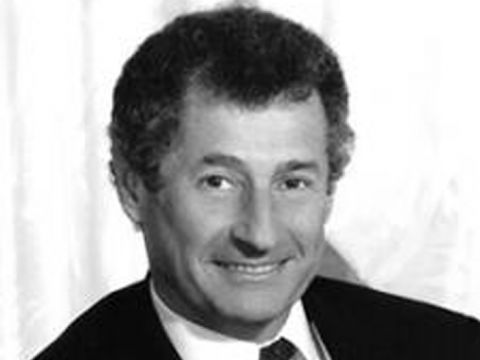This was the early 1960s, and Kleinrock, an MIT graduate student, was designing a new means of sending information between the TX-2 and other computers of the day. But on this particular night, he was at the end of his rope. “I was tired. I was hungry. I was grumpy. And I had a bad taste in my mouth,” Kleinrock remembers. And then the TX-2 started to hiss.
The TX-2 was an experimental machine, and, well, this was the early 1960s. Kleinrock was worried the system was about to die on him. Just above his head, there was a small gap in the front of the system — an 8-inch by 1-inch hole where a panel had been removed for repairs — and as he looked through the gap, he suddenly realized where the hiss was coming from.

“I saw two eyes staring back at me through the hole in the console. It was that son of bitch Larry Roberts!” Kleinrock says. And in this case, “son of bitch” is a term of affection. Larry Roberts was Kleinrock’s office mate at the Lincoln Lab, and in the years to come, the two of them would change the face of computing — and so much more.
That little moment — in the middle of the night, deep inside the Lincoln Lab — held the seeds of the modern internet. Using the TX-2, Kleinrock would create what became known as “packet-switching,” and Roberts would use this idea to build the ARPAnet, the research network that eventually gave rise to the internet as we know it.
This past April, both Kleinrock and Roberts were part of the inaugural class inducted into the Internet Hall of Fame, together with such luminaries as Vint Cerf, Tim Berners-Lee and Bob Kahn. Roberts calls himself “the founder of the internet” — and for good reason — but as he himself points out, he was building on the work of Leonard Kleinrock.
When Kleinrock showed up at MIT in the late ’50s, he was surrounded by massive computers, but they had no way of talking to each other. With his MIT thesis, he sought to solve this problem, and he eventually settled on the notion of a network that exchanged information by breaking it into tiny pieces. The idea was to build a system where you only used the network when you actually had something to send, and the best way to do this, he says, was to split the information up.
“You chop these long messages into fixed-length blocks and then you send them independently,” he says. “These blocks then queue up to use the communications resource. Every block is the same size, so the little guys never get stuck behind the big guys.” Using the TX-2, he simulated this sort of network, mathematically proving the concept would work, and in April of 1962, he published a paper detailing his research.
In short, he invented the notion of network packets — though he didn’t call them that. That term was coined by a British researcher named Donald Davies. At around the same, both Davies and a third researcher named Paul Baran cooked up the packet idea independently of Kleinrock, but it was Kleinrock’s work that fed the ARPAnet. Larry Roberts was his office mate.
While still at Lincoln Lab, Roberts used Kleinrock’s basic ideas to build a (real) network between the TX-2 and another machine in Santa Monica, California. Then, in 1966, the U.S. Department of Defense hired Roberts to design the ARPAnet, a network that would connect multiple machines spanning multiple research outfits across the country.
The first node on the ARPAnet was the University of California, Los Angeles, and it was set up by a team of 40 researchers led by Leonard Kleinrock. He had taken a teaching position at UCLA after completing his thesis at MIT, and it was only natural that he would oversee the first connection to the ARPAnet.
Kleinrock and his UCLA team — which also included Vint Cerf — set up the node on Sept. 2, 1969. Basically, they connected their host computer to an ARPAnet IMP — or Interface Message Processor, a second machine serving as a gateway to the larger network. “That’s the day that the infant internet took its first breath of life,” Kleinrock once told us.
A month later, researchers at the Stanford Research Institute in North California set up a node of their own, and on Oct. 29, the first message traveled between the two. “That’s the day the internet uttered its first words,” Kleinrock says.
What did it say? Well, it eventually said “log in.” But it had a little trouble getting the words out. The idea was that UCLA would send the word “log,” and SRI would respond with the “in.” But after Kleinrock and crew sent the “l” and the “o,” the “g” caused a memory overflow on the Stanford IMP.
“So the first message was ‘Lo,’ as in ‘Lo and Behold,’” Kleinrock says. “We couldn’t have asked for a better message.”
